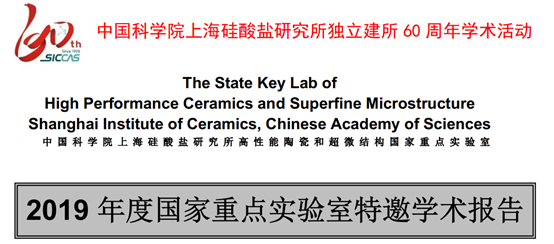Phase Transitions of Correlated Oxides and Neuromorphic Electronics

Phase Transitions of Correlated Oxides and Neuromorphic Electronics
Jian Shi
Rensselaer Polytechnic Institute
时间:2019 年12 月24日(星期二)下午: 2:00
地点:嘉定园区F楼8(2)会议室
欢迎广大科研人员和研究生参与讨论!
联系人:孙宜阳(69906536)
报告摘要:
As the finest computing system in our planet, human brain outperforms IBM Blue Gene at many aspects (energy efficiency, memory capacity and computational speed). The development of digital computer has been starting to meet a fundamental limit for its computing capability due to the paradox between the switching speed and power dissipation. Inspired by biological neural systems, neuromorphic systems open up new computing paradigms to explore cognition, learning and limits of parallel computation. In our brains, synapse is believed to be responsible for the learning and memory behaviors. The success of synapse concept at software-level artificial neural networks in the applications of voice and image recognitions has been driving the search for their hardware counterpart – synaptic transistor. Here we emulate the synapse by using a strongly correlated oxide – SmNiO3. The electronic properties of correlated oxides are exceptionally sensitive to the orbital occupancy of electrons. We show a new strategy – interstitial electron doping via chemical route - for realizing sharp phase transition in perovskite SmNiO3. The electron configuration of eg orbital of Ni3+ in metallic SmNiO3 is modified by injecting and anchoring an extra electron, forming a strongly correlated Ni2+
in metallic SmNiO3 is modified by injecting and anchoring an extra electron, forming a strongly correlated Ni2+ structure leading to the emergence of a new insulating phase. By this means, a reversible resistivity modulation greater than eight orders of magnitude (along with large change in optical band gap) is demonstrated at room temperature. A solid state synaptic proton-gated phase-change transistor is demonstrated based on this principle. With ionic liquid-gating SmNiO3 transistor as an example, synaptic Spike-Timing-Dependent Plasticity (a popular learning algorithm in many synapses) is realized. The extreme sensitivity of electronic properties to dopants in correlated oxides make them a particularly suitable class of materials to realize artificial biological circuits that can be operated at and above room temperature and seamlessly integrated into conventional electronic circuits.
structure leading to the emergence of a new insulating phase. By this means, a reversible resistivity modulation greater than eight orders of magnitude (along with large change in optical band gap) is demonstrated at room temperature. A solid state synaptic proton-gated phase-change transistor is demonstrated based on this principle. With ionic liquid-gating SmNiO3 transistor as an example, synaptic Spike-Timing-Dependent Plasticity (a popular learning algorithm in many synapses) is realized. The extreme sensitivity of electronic properties to dopants in correlated oxides make them a particularly suitable class of materials to realize artificial biological circuits that can be operated at and above room temperature and seamlessly integrated into conventional electronic circuits.
报告人简介:
 Dr. Jian Shi is an Associate Professor in the Department of Materials Science and Engineering at Rensselaer Polytechnic Institute. Prior to this appointment, Dr. Shi was a postdoctoral research fellow at Harvard University from 2013 to 2014. He received his Ph.D. degree in Materials Science at the University of Wisconsin at Madison in 2012, his M.S. degree in Mechanical Engineering at the University of Missouri at Columbia in 2008 and his B.S. degree in Materials Science and Engineering at Xi’an Jiaotong University in 2006. Dr. Shi is a recipient of 2018 Rensselaer Polytechnic Institute School of Engineering Research Excellence Award. Dr. Shi also received Air Force Office of Scientific Research (AFOSR) Young Investigator Research Program (YIP) Award in Oct 2017. Dr. Shi is an Early Career Member in the Editorial Advisory Board of Journal of Applied Physics. His current research focuses on the growth and study of the physical properties of semiconducting and phase transition materials.
Dr. Jian Shi is an Associate Professor in the Department of Materials Science and Engineering at Rensselaer Polytechnic Institute. Prior to this appointment, Dr. Shi was a postdoctoral research fellow at Harvard University from 2013 to 2014. He received his Ph.D. degree in Materials Science at the University of Wisconsin at Madison in 2012, his M.S. degree in Mechanical Engineering at the University of Missouri at Columbia in 2008 and his B.S. degree in Materials Science and Engineering at Xi’an Jiaotong University in 2006. Dr. Shi is a recipient of 2018 Rensselaer Polytechnic Institute School of Engineering Research Excellence Award. Dr. Shi also received Air Force Office of Scientific Research (AFOSR) Young Investigator Research Program (YIP) Award in Oct 2017. Dr. Shi is an Early Career Member in the Editorial Advisory Board of Journal of Applied Physics. His current research focuses on the growth and study of the physical properties of semiconducting and phase transition materials.


 当前位置:
当前位置:

